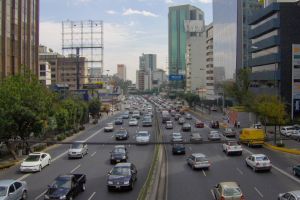The implementation of automated vehicles (AVs) will reshape our cities in ways large and small, but much is unknown to make reliable predictions about AVs’ specific effects on cities.
Key Findings
If history is a guide, the implementation of automated vehicles (AVs) will reshape our cities in ways large and small. Railroads created dense, compact cities, while the emergence of automobiles encouraged low-density, horizontal development. Transportation technology has long inspired social, economic, and cultural developments in cities. What will be the effects of AVs on urban areas?
Too much is unknown to make reliable predictions about AVs’ specific effects on cities. Most experts expect autonomous technology to reduce crash deaths, but they agree on little beyond that. Some predict AVs will reduce traffic and emissions; others insist AVs will increase them. Some forecast AVs to encourage compact, sustainable urban development, while others argue they will unleash a wave of environmentally destructive sprawl. Much remains in flux, as suggested by the ever-growing list of acronyms for new variations of the vehicles: FAVs, SAVs, CAVs, HAVs, CASEs, SAEVs, and so on.1
But cities are paying attention and beginning to plan for the new technology. In August, Chicago announced a new mobility task force chaired by former US Secretary of Transportation Ray LaHood, the largest city yet to convene a body to approach emergent transportation technologies2 , continued business investment has quickened the pace of technological advance, and many cities predict the vehicles will become a regular feature of their streets within a decade.
As policymakers strategize about the future of mobility in cities, they would be well served to look to the past. History can guide cities to ask the right questions about the promise and peril of new mobility technology. Parallels abound between today and the turn of the twentieth century, just before cars began pouring onto US city streets, and Chicago’s new mobility task force harkens to an older planning effort—the 1909 Plan of Chicago—which was itself profoundly affected by new transportation technology. That cars did so much not just to disrupt the Plan, but also to remake the idea of the street itself, shows the unexpected consequences new transportation can have for cities. The lesson for cities is clear: they must approach new transportation, whether automobiles or AVs, in a proactive and holistic fashion.
- 1Rhoda Miel, "CASE, ACES, or SAEV: What will we call electric, shared, self-driving cars?" Automotive News 7/31/2018 Accessed 10/15/2018).
A sampling of the diverse acronyms can be found in the following pieces:
Robin Chase, "Will a World of Driverless Cars be Heaven or Hell?" CityLab 4/3/2014 (Accessed 10/15/2018)
Purdue University Discovery Park, "Connected and Autonomous Vehicles" (Accessed 10/15/2018)
Inrix, "Inrix AV Road Rules" (Accessed 10/15/2018) - 2Mary Wisniewski, "Former U.S. Transportation Secretary Ray LaHood to Chair New City Transportation Task Force" Chicago Tribune, 8/31/2018 (Accessed 11/2/2018)


